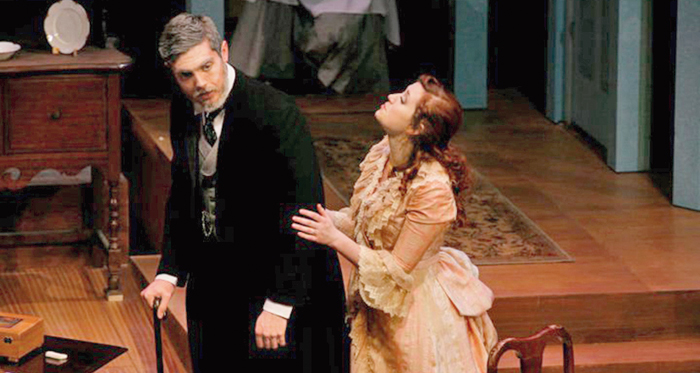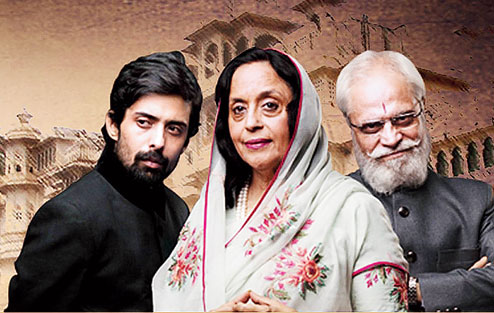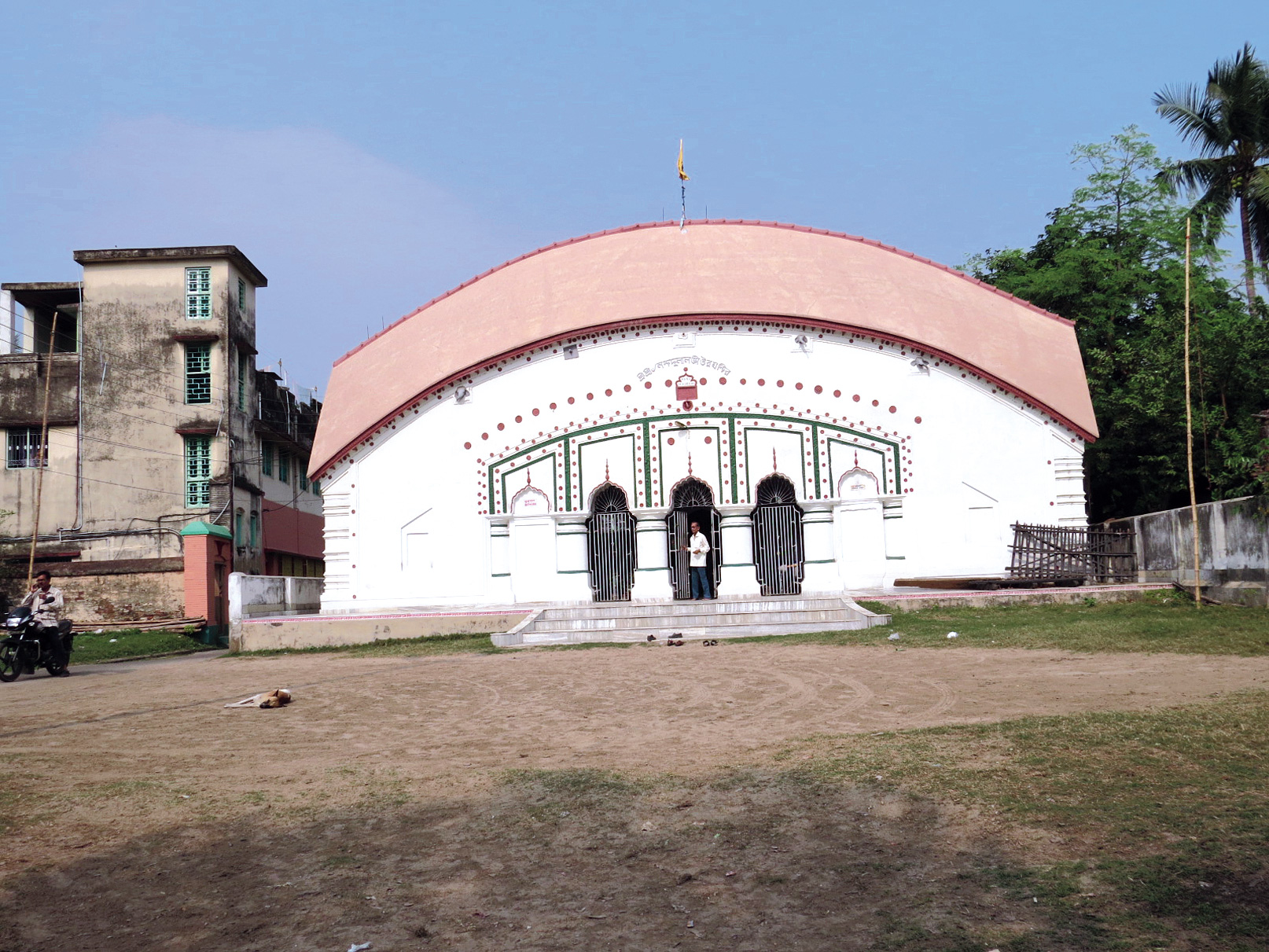Non-resident Indians often get it wrong when writing about the social scene in India. One British-Indian novelist made a Bengali police sergeant an old Harrovian with an impeccable Home Counties accent. Another — or was it the same writer? — elevated Taggart, the notorious Calcutta police commissioner, to a lord. Gurindar Chadha skirts round these pitfalls since her desi characters remain in Britain, but I had doubts about Tanika Gupta, described as “an English playwright of Bengali descent”, whose adaptation of Ibsen’s A Doll’s House is playing to a packed Lyric theatre in London’s Hammersmith, and has received deservedly good reviews.
The doubts arose because of Gupta’s themes. Sitting in Calcutta some years ago, I heard her BBC talk about her radio play, Voices on the Wind, in which her great-uncle Dinesh Gupta, one of the trio commemorated in Dalhousie Square’s present name, engaged in an imaginary conversation with his sympathetic Irish jailer. It seemed an improbable relationship for 1930. I wasn’t aware then of Charles O’Donnell of the Indian Civil Service who found ways of tempering service to the raj with expressions of his suppressed anti-English nationalism. He anonymously authored the so-called Black Pamphlet on British India’s allegedly wasteful famine relief; O’Donnell also enabled his parliamentarian brother to ask in the House of Commons why a European had superseded my great-grandfather Bihari Lal Gupta, also of the ICS, in being appointed Calcutta’s chief presidency magistrate. Nevertheless, it was an unreal conversation between jailer and jailed and I wasn’t surprised to read recently that Tanika herself had called the play “pretty bad... very didactic and desk-thumping”.
There’s no mistaking the powerful women’s lib message of Rachel O’Riordan’s inspired direction of her version of A Doll’s House. It’s the circumstances in which the message is boomed that smack of anomaly and anachronism to those who venture beyond the feminist theme. The play is set in 1879, the year in which the original Norwegian version was performed at the Royal Theatre in Copenhagen. But would an English “colonial administrator” — which implies the ICS — in a natty three-piece suit, even one who is unconventional enough to marry an Indian wife, have lived in a house “built in the grand Victorian style of the time with an open, light-filled courtyard in the middle and rooms which lead off from it”? Actually, it’s a pretty stark abode but the description smacks of a Bengali merchant prince’s North Calcutta mansion, not a sahib’s anglicized ‘south of Park Street’ bungalow. Civilians of that era were surrounded by bearers, khansamas, bawarchis, khidmutgars and other servitors, not a solitary village girl called Uma.
The bigger mystery surrounds staid Tom’s marriage to the elfin Niru. As Tanika rightly — or almost rightly — says in her preface to the play, “such unions between Europeans (English, French and Portuguese) and local women, both Hindu and Muslim, were common throughout the 18th century in Calcutta, and are the origin of the city’s substantial Anglo-Indian (or Eurasian) community today.” However, despite a few outstanding examples, the unions were not sanctified marriages: they were more often transient forms of concubinage. Tanika adds, “By the early 19th century, however, increasing racial intolerance made marriages of this kind much rarer.” The domesticated legal relationship between Tom and Niru that the play portrays is therefore not merely exceptional. It is unique. But why did Tom convert Niru to Christianity? Was he as much missionary as liberal?
Twenty years after the Mutiny the British in India were leading almost an embattled existence. Whether or not they were under siege, their mentality was one of being besieged. Several factors had reinforced the perceived threats of 1857. Arriving as governor-general after his defeat in America, Lord Cornwallis was determined not to take any chances with another aspiring colonial population. A steady trickle of Indians (invariably referred to as natives) into the Indian Civil Service, beginning with Satyendranath Tagore, and overwhelming Indian recruitment to the subordinate services demonstrated an indigenous determination to participate in governance. Organizations like the conservative British Indian Association and Surendranath Banerjee’s Indian Association leading to the Indian National Congress suggested that a political challenge was in the making.
British rule rested then not on the strength of arms but on the conviction of racial superiority in which the subject nation appeared willingly to acquiesce. The question involved more than ‘colonial masculinity’. It implied genetic pretensions and should be the subject of separate inquiry. It was no part of Ibsen’s story which was set in a self-governing homogenous society. His play provoked a storm of controversy because it questioned some of the fundamental assumptions of the time. As Tanika’s preface explains, Ibsen did not attempt to indulge in propaganda for the women’s rights movement: he was inspired by the conviction that “a woman cannot be herself in modern society” which is “exclusively male… with laws made by men and with prosecutors and judges who assess feminine conduct from a masculine standpoint”.
That’s how all the British playgoers surrounding us at the Lyric saw O’Riordan’s direction of A Doll’s House. Many, like my wife and I, missed the mention of Tanika Gupta’s adaptation and the fact that the story had been plucked out of 19th-century Norway and plonked down in colonial Calcutta. It was a bonus for us that having gone to see Ibsen, we savoured a passage of our own past. Judging from the initially surprised comments and the exchanges during the interval, British members of the audience also soon settled down to enjoy this depiction of wrecked masculinity and feminist triumphalism in a colonial setting. I am sure the many young ethnic Indian girls (not so many NRI youths, I noticed) with white escorts in the audience also enjoyed the play for the same reason. Only an old codger like me, who can’t escape the bondage of caste and class and remembers all too well the race divide that was a characteristic of Calcutta society even in the 1960s and may still linger as a state of mind, pondered on contradictions and inconsistencies.
Two years after the play was staged the Maharaja and Maharani (Keshub Chunder Sen’s daughter) of Cooch Behar hosted a ball at which they were the only native Indians. Yet, anecdotal history has it that when the Duke of Sutherland wanted to marry one of their daughters, he was not allowed to. Syed Ameer Ali and his English wife and the Cooch Behars were not allowed to buy tickets for the whites-only subscription ball at Calcutta Town Hall for Queen Victoria’s third son, the Duke of Connaught, and his duchess. Racing down the years, John Auden had to resign all his club memberships in Calcutta when he married Sheila Bonnerjee, W.C. Bonnerjee’s granddaughter. Independent India scored a minor retaliatory victory by refusing to confirm Auden as director-general of the Geological Survey of India which he had served all his life because he was a foreigner. Given this background, I could not help but wonder where Niru came from.
The parallel that came to mind was of one of the daughters of Mrs P.K. Roy (of Gokhale Memorial School fame) marrying an Englishman, probably also a Civilian. That was somewhat later and although also not a successful marriage, seems to have been qualitatively different. Tom in his bitterness suspects Niru of forgery and yells, “You have the same blood as your father. His irresponsible criminal ways,” and mentions “his criminal activities”. That suggests a social and financial gulf between the two men in Niru’s life. So, how did they meet?
None of this detracts from the play’s educational and entertainment value. But it does remind us that good theatre is more than effective stagecraft. The cultural context also matters.













